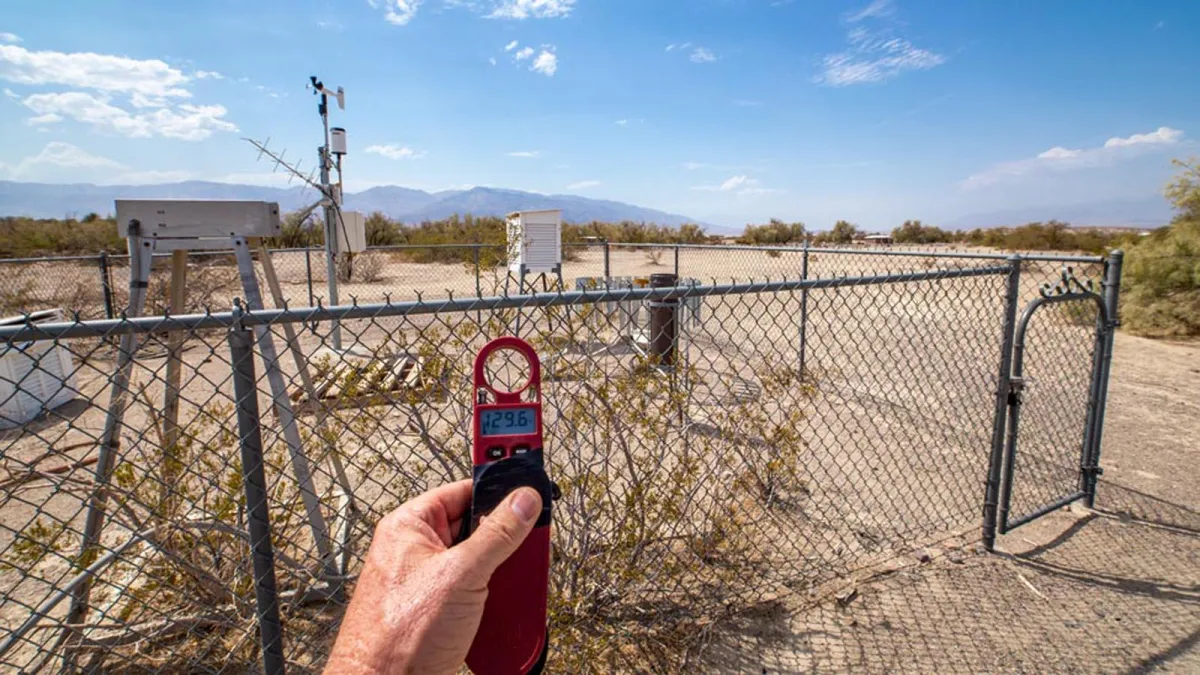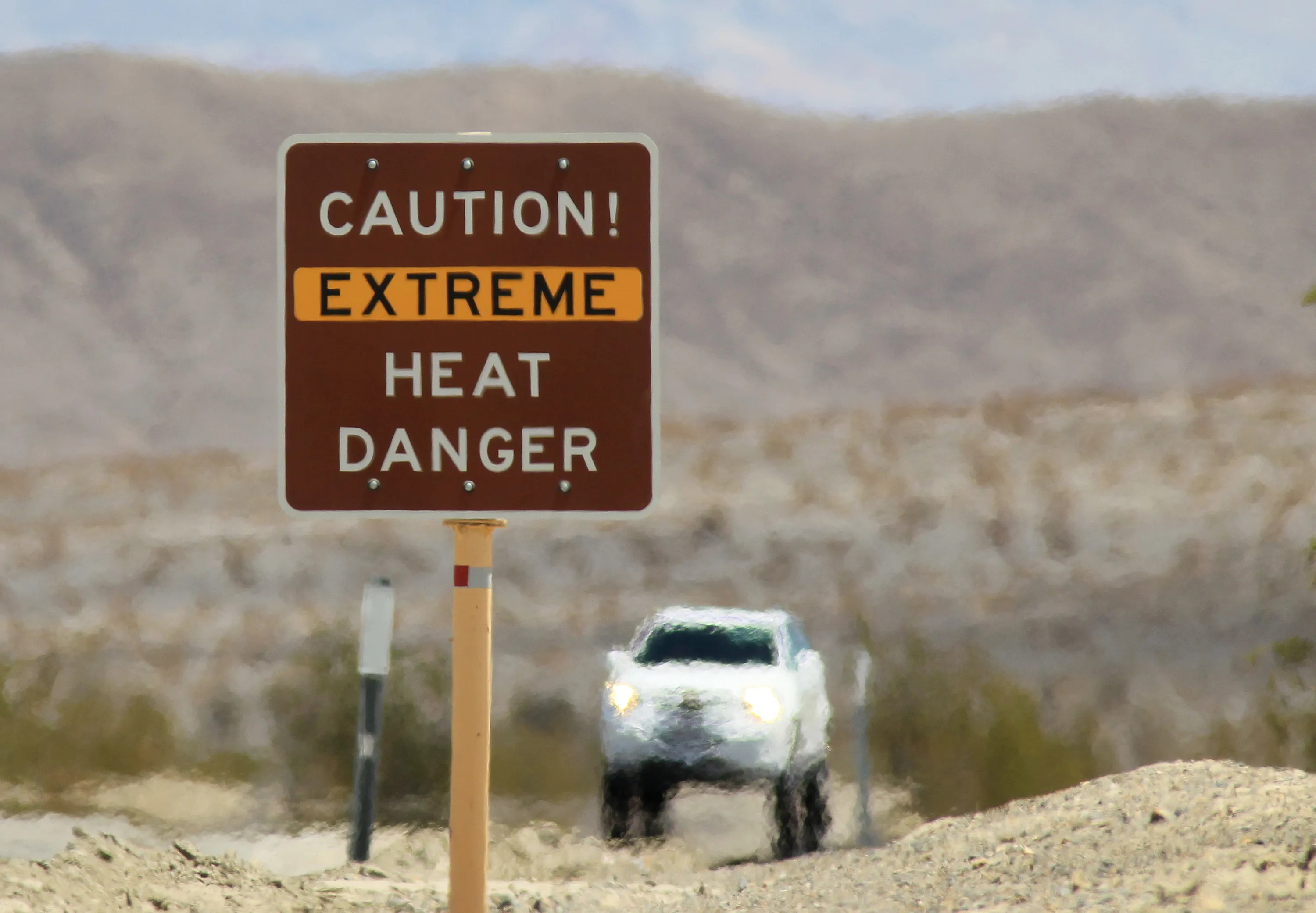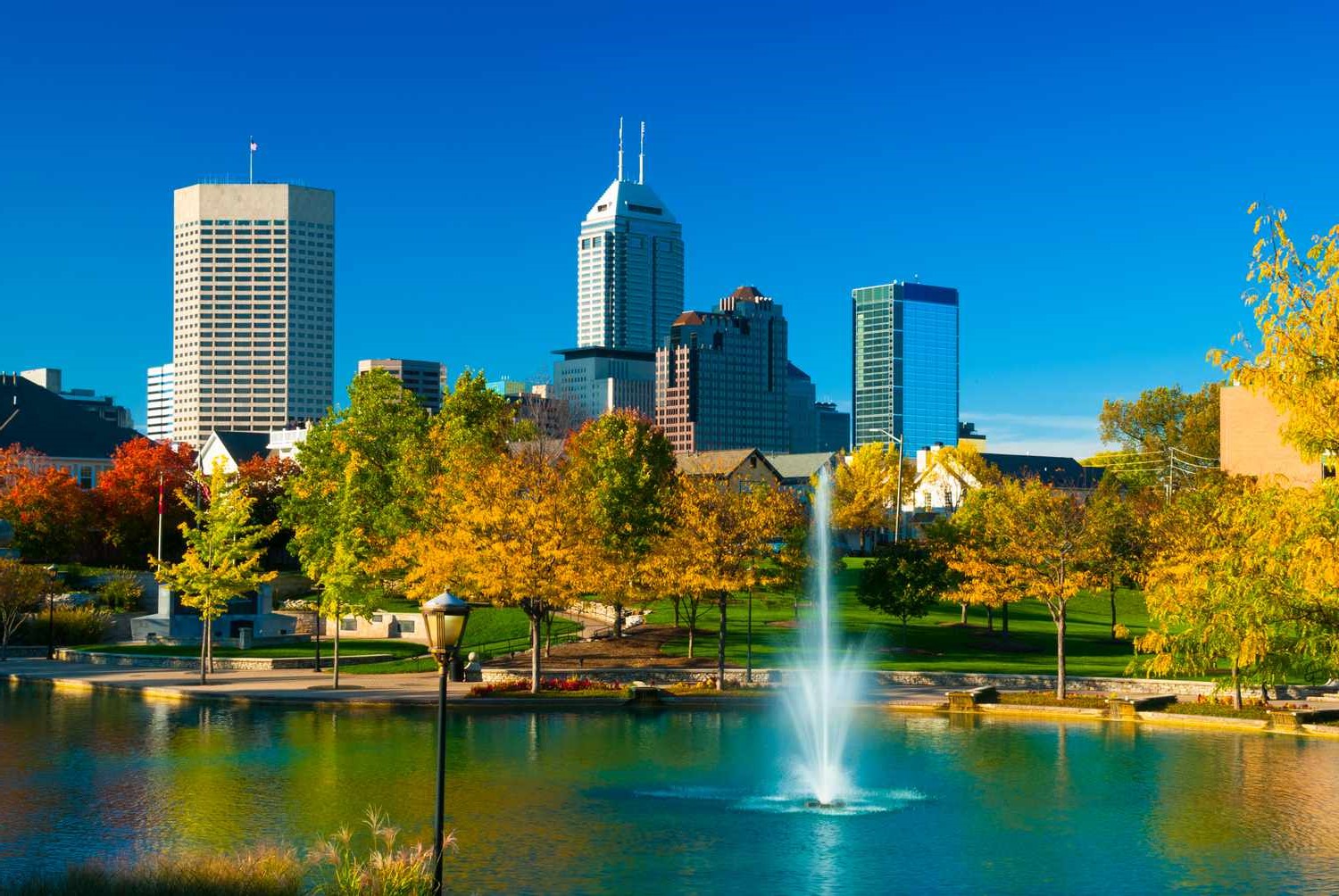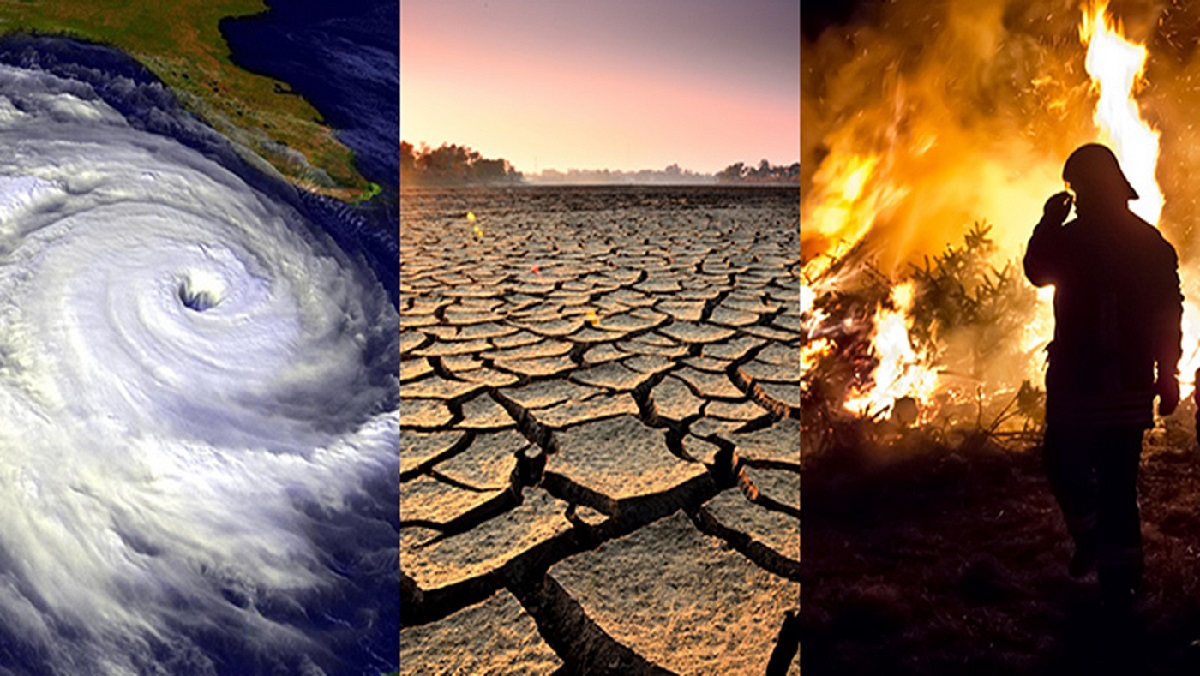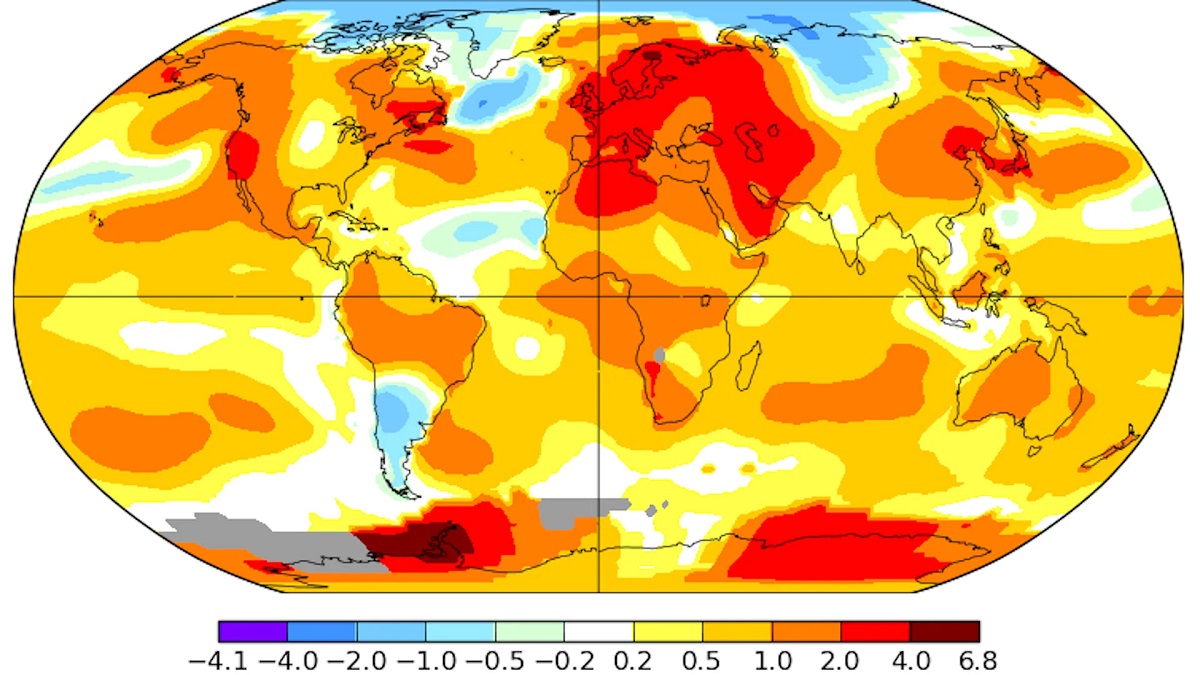Home>Weather and Climate>Indiana’s Historical Temperature Records By Date


Weather and Climate
Indiana’s Historical Temperature Records By Date
Published: March 2, 2024
Explore Indiana's historical temperature records by date. Learn about the weather and climate trends in the region over the years.
(Many of the links in this article redirect to a specific reviewed product. Your purchase of these products through affiliate links helps to generate commission for Temperatures.com, at no extra cost. Learn more)
Table of Contents
Introduction
Indiana's historical temperature records provide a fascinating glimpse into the state's climate patterns over the years. These records offer valuable insights into the temperature fluctuations, extreme weather events, and long-term climate trends that have shaped Indiana's environmental landscape. By delving into the historical temperature data, we can uncover compelling stories of resilience, adaptation, and the ever-evolving relationship between humans and nature in the Hoosier State.
The exploration of Indiana's temperature records allows us to appreciate the intricate tapestry of climatic variations that have unfolded across the region. From the frigid depths of winter to the sweltering heat of summer, these records chronicle the diverse array of weather phenomena that have left an indelible mark on Indiana's history. By examining the temperature data from different time periods, we can discern the cyclical nature of climate patterns and gain a deeper understanding of the forces that have shaped Indiana's weather over the centuries.
As we embark on this journey through Indiana's historical temperature records, we will uncover a wealth of information that transcends mere numbers and statistics. Each temperature record is a testament to the dynamic interplay between atmospheric conditions, geographical features, and human activities. By immersing ourselves in the rich tapestry of Indiana's climate history, we can glean valuable lessons about adaptation, resilience, and the profound impact of climate variability on the state's ecosystems and communities.
Join us as we traverse the annals of Indiana's temperature records, unraveling the mysteries of the past to gain a deeper appreciation for the intricate dance of climate dynamics that continues to unfold in the present day. Through this exploration, we will unearth the hidden stories behind the numbers, shedding light on the profound significance of historical temperature records in understanding Indiana's climatic heritage.
Early Temperature Records in Indiana
The early temperature records in Indiana serve as a captivating chronicle of the state's climatic evolution, offering a window into the weather patterns that have shaped the region over the centuries. These records, meticulously preserved and analyzed, provide a compelling narrative of Indiana's meteorological history, illuminating the ebb and flow of temperatures that have left an indelible imprint on the state's landscape.
In the 19th century, when systematic weather observations began to take root in Indiana, the recording of temperature data marked a pivotal milestone in the state's scientific endeavors. The establishment of weather stations and the diligent efforts of early meteorologists laid the groundwork for capturing the nuances of Indiana's climate. Through meticulous record-keeping, these pioneers documented the temperature fluctuations that characterized the state's seasons, from the biting cold of winter to the balmy warmth of summer.
The early temperature records in Indiana also reflect the pioneering spirit of the individuals who dedicated themselves to the systematic study of weather phenomena. Their meticulous observations, often conducted under challenging conditions, laid the foundation for the scientific understanding of Indiana's climate. These early records not only offer valuable insights into the temperature trends of yesteryears but also stand as a testament to the perseverance and dedication of those who sought to unravel the mysteries of the state's weather patterns.
As the decades unfolded, the temperature records in Indiana evolved into a comprehensive repository of climatic data, capturing the subtle shifts and dramatic fluctuations that have characterized the state's weather. From the record-breaking cold snaps to the sweltering heatwaves, these records encapsulate the full spectrum of Indiana's temperature dynamics, providing a rich tapestry of information for researchers, historians, and climate enthusiasts.
The early temperature records in Indiana, with their meticulous attention to detail and unwavering commitment to scientific rigor, offer a compelling narrative of the state's climatic heritage. By delving into these records, we gain a profound appreciation for the intricate interplay of atmospheric forces that have sculpted Indiana's weather patterns, laying the groundwork for a deeper understanding of the state's climatic past.
In the next section, we will delve into the notable temperature events in Indiana's history, unraveling the gripping tales of extreme weather phenomena that have left an enduring mark on the state's collective memory. Join us as we embark on a journey through the annals of Indiana's temperature records, uncovering the captivating stories that lie beneath the surface of numerical data.
Notable Temperature Events in Indiana History
The historical temperature records of Indiana bear witness to a myriad of notable temperature events that have left an indelible mark on the state's climatic narrative. These events, ranging from extreme cold spells to scorching heatwaves, have shaped the collective memory of Indiana's inhabitants and underscored the profound impact of weather phenomena on the region's history.
One such notable temperature event occurred during the infamous "Great Blizzard of 1978," which unleashed a relentless onslaught of snow and frigid temperatures across Indiana. The blizzard, fueled by a potent convergence of atmospheric forces, blanketed the state in a thick layer of snow and brought life to a standstill. The bone-chilling cold and towering snowdrifts left an enduring impression on Indiana's residents, serving as a stark reminder of nature's raw power.
In contrast, the searing heatwave of 1936 stands as another pivotal temperature event etched in Indiana's history. During this scorching episode, the mercury soared to unprecedented heights, subjecting the state to blistering temperatures that tested the resilience of both humans and ecosystems. The searing heatwave of 1936 serves as a testament to the extreme fluctuations that punctuate Indiana's climate history, leaving an enduring imprint on the collective consciousness of the state's inhabitants.
Furthermore, the record-breaking cold snap of 1985 stands as a chilling testament to the volatile nature of Indiana's winter climate. During this frigid episode, temperatures plummeted to staggering lows, plunging the state into a deep freeze that tested the fortitude of its residents. The bitter cold of 1985 serves as a poignant reminder of the stark contrasts that define Indiana's temperature dynamics, underscoring the need for resilience and preparedness in the face of extreme weather events.
Additionally, the historic heatwave of 2012 stands as a modern-day exemplar of the profound temperature events that have punctuated Indiana's climatic history. During this scorching episode, the state grappled with soaring temperatures that strained infrastructure, challenged agricultural practices, and underscored the far-reaching implications of extreme heat on Indiana's communities.
These notable temperature events, woven into the fabric of Indiana's climatic heritage, offer a compelling testament to the state's resilience in the face of nature's formidable forces. By delving into these historical temperature records, we gain a deeper appreciation for the intricate tapestry of temperature events that have shaped Indiana's history, leaving an enduring legacy that continues to resonate in the present day.
Impact of Historical Temperature Records on Indiana's Climate Trends
The historical temperature records of Indiana serve as a crucial lens through which we can discern the profound impact of climate variability on the state's long-term trends. These records, meticulously cataloging the ebb and flow of temperatures over the years, offer invaluable insights into the evolving climate dynamics that have shaped Indiana's environmental landscape.
By analyzing the historical temperature records, researchers and climate scientists can discern discernible patterns and trends that illuminate the intricate interplay of atmospheric forces within Indiana's climate. These records provide a comprehensive dataset that enables the identification of long-term temperature trends, including fluctuations in seasonal temperatures, shifts in temperature extremes, and the overarching trajectory of Indiana's climate over time.
Moreover, the historical temperature records play a pivotal role in elucidating the influence of external factors, such as human activities and natural phenomena, on Indiana's climate trends. By examining the temperature data in conjunction with other environmental indicators, researchers can unravel the complex web of interactions that underpin the state's climatic shifts, shedding light on the multifaceted drivers of change within Indiana's ecosystems.
Furthermore, the historical temperature records offer a compelling vantage point from which to assess the impact of climate variability on Indiana's natural and human systems. By tracing the temperature trends across different time periods, researchers can discern the implications of climatic fluctuations on agricultural practices, water resource management, energy consumption, and public health within the state. These insights are instrumental in informing adaptive strategies and policy decisions aimed at mitigating the effects of climate variability on Indiana's communities and ecosystems.
Additionally, the historical temperature records serve as a cornerstone for validating and refining climate models, enabling scientists to enhance their predictive capabilities regarding future climate scenarios in Indiana. By comparing the observed temperature trends with model projections, researchers can refine their understanding of Indiana's climate dynamics, thereby bolstering the accuracy of forecasts and assessments related to climate change impacts and adaptation strategies.
In essence, the historical temperature records of Indiana wield a profound influence on our comprehension of the state's climate trends, offering a wealth of knowledge that informs our understanding of past, present, and future climatic dynamics. These records stand as a testament to the enduring legacy of Indiana's climate history, providing a roadmap for navigating the complexities of climate variability and fostering resilience in the face of environmental change.
Conclusion
In conclusion, the exploration of Indiana's historical temperature records unveils a captivating tapestry of climatic evolution, extreme weather events, and the enduring impact of climate variability on the state's environmental narrative. From the early temperature records that chronicle the pioneering efforts of meteorologists to the notable temperature events that have left an indelible mark on Indiana's history, these records offer a profound insight into the dynamic interplay of atmospheric forces that have shaped the Hoosier State's climate.
The historical temperature records serve as a testament to the resilience and adaptability of Indiana's communities in the face of nature's formidable forces. They offer a compelling narrative of the state's climatic heritage, underscoring the profound influence of temperature fluctuations on the lives and livelihoods of its inhabitants. Moreover, these records provide a crucial foundation for understanding the long-term climate trends that define Indiana's environmental landscape, offering valuable insights for researchers, policymakers, and climate enthusiasts.
As we reflect on the impact of historical temperature records on Indiana's climate trends, it becomes evident that these records are instrumental in informing adaptive strategies, policy decisions, and scientific endeavors aimed at mitigating the effects of climate variability. By delving into the temperature data, researchers can discern discernible patterns and trends that illuminate the intricate interplay of atmospheric forces within Indiana's climate, thereby fostering resilience in the face of environmental change.
Furthermore, the historical temperature records serve as a cornerstone for refining climate models and enhancing our predictive capabilities regarding future climate scenarios in Indiana. By comparing the observed temperature trends with model projections, researchers can refine their understanding of Indiana's climate dynamics, thereby bolstering the accuracy of forecasts and assessments related to climate change impacts and adaptation strategies.
In essence, the historical temperature records of Indiana offer a wealth of knowledge that informs our understanding of past, present, and future climatic dynamics. They stand as a testament to the enduring legacy of Indiana's climate history, providing a roadmap for navigating the complexities of climate variability and fostering resilience in the face of environmental change. Through the exploration of these records, we gain a deeper appreciation for the intricate dance of climate dynamics that continues to unfold in the Hoosier State, underscoring the profound significance of historical temperature records in understanding Indiana's climatic heritage.
